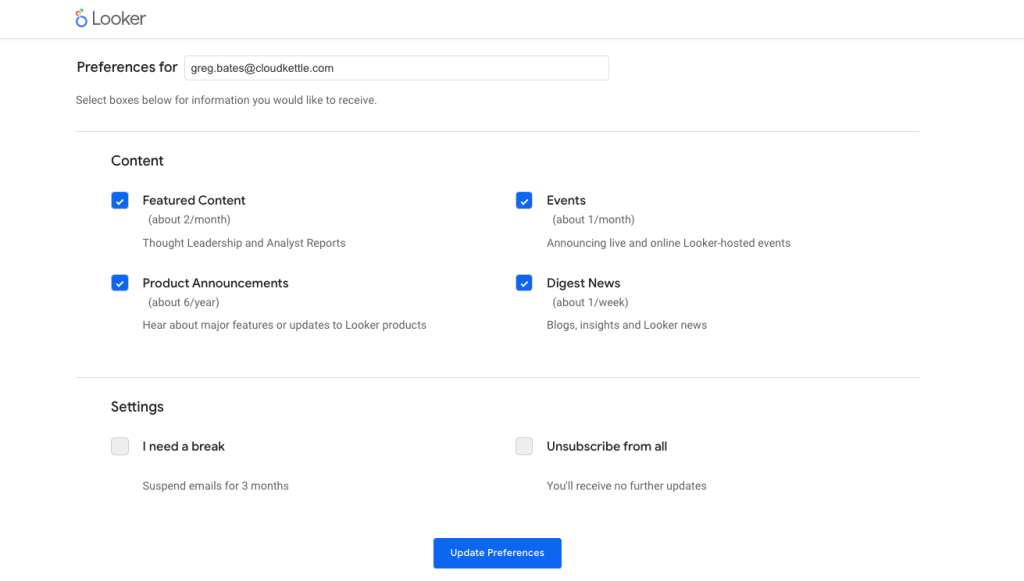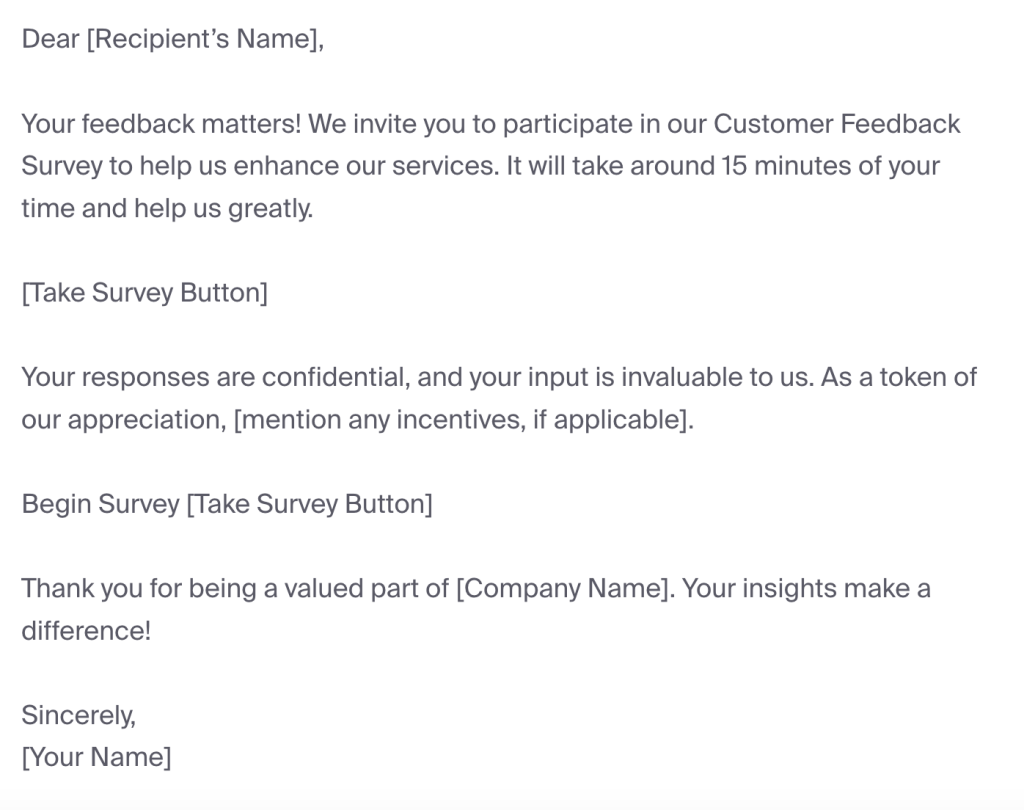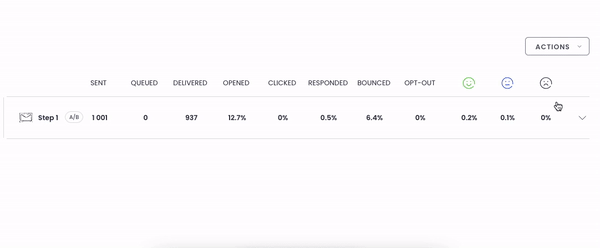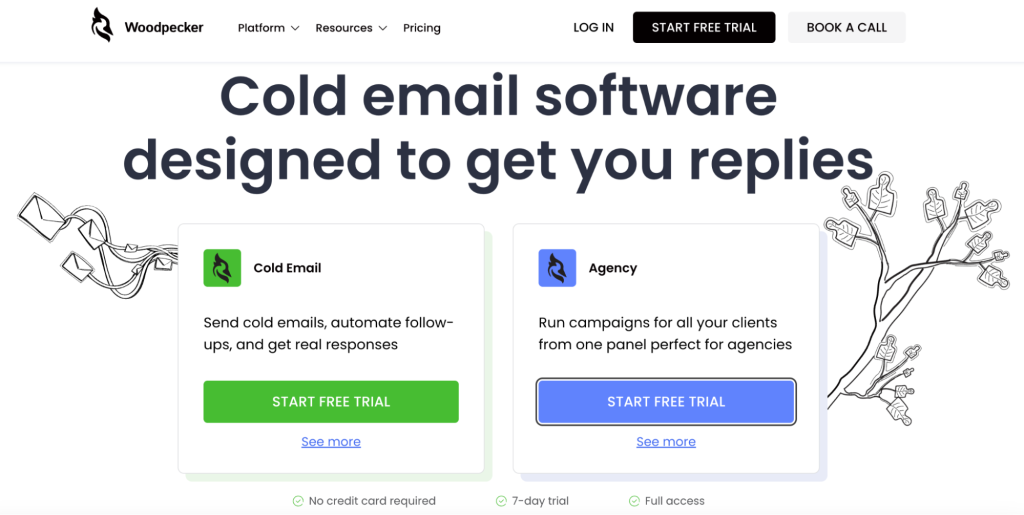Struggling to get responses from your email outreach efforts?
The problem might be your email cadence. Get it wrong, and your messages go unnoticed or annoy recipients.
But nail the perfect cadence? You’ll boost open rates, replies, and conversions. After all, 80% of sales require 5 follow-up calls after the initial contact. The same logic applies to email outreach.
In this post, we’ll explore what an email cadence is, why it matters, and how to find the right cadence for your audience. You’ll learn proven strategies to connect with prospects at the perfect time—without overwhelming their inboxes.
What is an email cadence?
Email cadence refers to the strategic timing and frequency of emails sent to subscribers. In addition to the number of marketing emails sent during a certain time period, it also includes the time between emails and how they are generally delivered.
In email marketing, a proper cadence is super important because it helps keep people interested without going too far.
To set up an email cadence, you need to know what your audience likes and what the goals of your email campaign are. For example, the cadence of a product launch might be very different from that of a regular newsletter.
For the former, daily emails might be needed to get people excited and get them to act right away. For the latter, a weekly or biweekly schedule might work better to keep people informed and interested without getting them tired.
A well-planned email cadence considers various factors, such as:
- the type of content,
- the audience’s position in the buyer’s journey,
- subscriber preferences and behavior,
- list segmentation and personalization,
- optimal times for sending emails.
For example, a new subscriber might receive a welcome email followed by a series of onboarding emails spaced out over a few days. In contrast, long-term subscribers might receive updates and promotions at a less frequent but consistent interval.
Segmentation and personalization are key components of an effective email cadence. Marketers can improve relevance and engagement by changing the frequency and content of emails sent to different groups of people.
People on a subscriber list may have different tastes, so this method helps you cater to those needs. For instance, some may want updates more often, while others may only want marketing emails once in a while.
In summary, email cadence is about finding the right balance in the timing and frequency of emails to maximize engagement and minimize unsubscribes. It requires ongoing testing, analysis, and adjustment to align with the changing preferences of the audience and the evolving goals of the email campaigns.
Why is an email cadence Important?
You need an effective email cadence for several reasons.
Firstly, it drives higher engagement and attention. Marketers can keep their audience interested without bothering them. Sending emails at the best times and intervals leads to higher open and click-through rates.
Because each email is relevant and valuable, it will connect with the recipient and make their experience with the brand better overall.
Secondly, a well-planned email cadence improves deliverability and sender reputation. Emails sent too often may be marked as spam by recipients, which can hurt the sender’s reputation and make it harder for future emails to be delivered.
Conversely, an optimal cadence keeps emails out of the spam folder and maintains a positive sender reputation.
Additionally, a strategic cadence provides better performance and insights. Marketers can uncover useful information about their audience’s preferred email timing and frequency by methodically testing and adjusting these variables.
For example, open rates, click-through rates, and conversion rates all go up when email campaigns are constantly optimized based on data.
On top of that, a good email cadence fits better with the customer journey. At different points in the buyer’s journey, you need to communicate in different ways and at different times.
For instance, new subscribers may need more onboarding emails, while long-term customers may only want updates once in a while.
Aligning email cadence with these stages guarantees that communications are timely and relevant, which leads to a more positive customer experience.
Efficient resource management is another benefit. Marketers can better use their resources when they plan and schedule emails ahead of time. This means that they do not have to run last-minute campaigns and can focus on more strategic content planning.
To sum up, a well-run email cadence is necessary to keep people interested, improve deliverability, gain insights, align with customer journeys, and make good use of resources.
How to find an email cadence that works for your business
Sending too many emails annoys people. Sending too few means you’ll be forgotten. But find that sweet spot? You’ll stay top-of-mind without overwhelming your recipients.
It’s a delicate balance. One that’s indispensable for nurturing leads and driving conversions. But how do you discover the ideal cadence for your business?
Follow these steps to find out:
Define the goals of your email marketing campaigns

To establish the correct email cadence, start by defining the goals of your email marketing campaigns.
Having clear goals will help you decide how often, when, and what to write in your emails, making sure they fit in with your overall marketing plan.
Here are some key goals to consider:
- Increase sales and conversions. If your primary goal is to drive sales, your email cadence should focus on timely promotions, product launches, and limited-time offers. For example, a retailer might send more frequent emails during peak shopping seasons to boost sales.
- Build brand awareness. For businesses looking to establish or enhance brand recognition, a consistent email schedule with valuable content like newsletters, blog updates, and industry news can keep your brand top-of-mind. A weekly or bi-weekly newsletter can be effective for this purpose.
- Engage and retain customers. To improve customer engagement and retention, tailor your email cadence to provide ongoing value. This might include regular tips, personalized recommendations, and loyalty rewards. For instance, a software company might send monthly product updates and quarterly user tips.
- Check website traffic. If the goal is to increase website visits, use your emails to share new content, events, or features. A blog might send out weekly summaries of new posts to drive regular traffic.
- Gather customer feedback. When aiming to collect feedback, surveys and follow-up emails after purchases or interactions can be scheduled strategically. For example, a service-based business might send a follow-up survey a few days after a service is provided.
Don’t forget about the SMART framework for goal setting. With it, your goals become specific, measurable, achievable, realistic, and time-bound. An example of such a goal in terms of brand awareness would be:
“Add 1,000 subscribers to our email list by the next quarter through newsletter promotion across several channels.”
Clearly stating these goals will help you set up an email cadence that works for your business and your audience.
Understand your target audience and map out your customer journey

The second step in creating an effective email cadence is understanding your target audience.
Identify key details like age, location, interests, and buying behavior. Use surveys, customer feedback, and analytics to gather this information. Segment your audience into groups based on these details. This helps in tailoring your emails to match their preferences.
Next, map out the customer journey.
Outline the steps a customer takes, from discovering your brand to making a purchase. Identify key stages: awareness, consideration, decision, retention, and advocacy.
For example, new subscribers might be in the awareness stage, so they will need introductory content. On the other hand, regular customers are in the decision stage. They prefer product updates and exclusive offers.
Based on these insights, plan how often you’ll send emails. Here are some examples of effective cadences:
- New subscribers (awareness stage):
- Welcome email: Immediately after sign-up
- Follow-up email: 3 days later with more information about your brand
- Engagement email: 1 week later with a special offer or resource
- Leads (consideration stage):
- Educational content: Weekly emails with tips, guides, and case studies
- Product comparisons: Bi-weekly emails showcasing how your products compare to competitors
- Customers (decision stage):
- Product updates: Monthly emails highlighting new features or products
- Exclusive offers: Bi-monthly emails with special discounts or early access to sales
- Loyal customers (retention stage):
- Loyalty program updates: Monthly updates on points or rewards
- Personalized recommendations: Quarterly emails with products based on past purchases
- Advocates (advocacy stage):
- Referral program: Monthly reminders to refer friends for rewards
- Brand ambassador content: Bi-monthly emails with opportunities to participate in brand campaigns
At each step, send the right material—this will keep people interested and lead them smoothly through the journey. Your customer journey map should be examined and changed often based on new information and feedback.
This way, you can maintain an efficient email schedule that caters to your customers’ needs.
Understanding your target audience and mapping their journey helps create an optimal email cadence. It improves engagement and supports your business goals.
Create a preference center

Setting up a preference center is a smart way to improve your email schedule because it lets people choose how and when they get emails.
Not only does this approach make users happier, but it also contributes to their engagement. And, it’s a sign of respect because you allow them to retain a degree of control over the communication.
Make sure to incorporate these elements:
- Customization options. Provide subscribers with various options to tailor their email preferences. This can include selecting the frequency of emails (daily, weekly, monthly), choosing the types of content they want to receive (promotions, newsletters, product updates), and specifying preferred days and times for receiving emails.
- User-friendly interface. Ensure the preference center is easy to navigate. A well-designed, intuitive interface will encourage more subscribers to use it. Clearly label options and provide brief descriptions to help users understand their choices. For example, use checkboxes for selecting email types and sliders for setting frequency.
- Regular updates and reminders. Periodically remind subscribers about the preference center. Include links to it in your email footers and during subscription sign-ups. This keeps users aware that they can control their email experience, creating a sense of empowerment and satisfaction.
A preference center demonstrates respect for your subscribers’ wishes, which leads to better email performance. Customers will trust and stay loyal to your brand more if they feel they have more control over how they interact with it.
Collect user feedback
You will need to gather user feedback to tweak your email cadence.
Start by sending short, focused surveys to your subscribers. Ask them about their email preferences, including frequency, content type, and timing. Keep surveys simple and offer incentives like discounts or freebies to encourage participation.

Encourage direct feedback in your other marketing emails by adding a simple question at the end, asking if the content was helpful, and including a link to a feedback form.
Additionally, monitor social media for comments about your emails. This can provide insights into how your audience feels about your own email frequency and content. Try social listening tools; these can find mentions of your company across social media channels.
Create subscriber segments to analyze feedback from different groups. Preferences may vary between new subscribers and long-term customers, so tailor your email cadence based on what each group prefers.
Collecting feedback helps you understand your audience better. Use this information to adjust your email cadence, improve engagement, and meet your business goals.
Test out your cadence
Testing your email cadence is essential for finding what works best. Start by using A/B testing to compare different cadences.
Create two versions of your email marketing campaign. For example, send emails weekly to one group and bi-weekly to another. You can also test:
- Subject lines
- Email content length
- Call-to-action placement
- Send times
- Personalization elements
- Visual elements (images vs. text)
Track the results to see which cadence performs better.
Woodpecker offers powerful A/B testing functionality that simplifies this process. It allows you to easily set up and automate split tests, test different email frequencies, subject lines, and content variations, and more.
Track key metrics like open rates, share rates, click-through rates, and unsubscribe rates to see which version performs better. The platform provides clear, actionable data to help you make informed decisions about your email marketing strategy.

Use the insights from Woodpecker’s A/B tests to adjust your email cadence. If weekly emails lead to higher engagement, stick with that frequency.
If bi-weekly emails result in fewer unsubscribes, consider that cadence. Keep experimenting with different timings and frequencies to fine-tune your strategy.
Gather feedback from your audience as well. Include a short survey in your emails, asking if the frequency is right. This gives direct insights into your subscribers’ preferences.
Testing is an ongoing process. Get your sales team to regularly review these metrics and feedback to optimize your email cadence.
For more details on how to use Woodpecker’s A/B testing feature, visit our help page.
Keep an eye on your email analytics
Monitoring your email analytics is extremely important to track ongoing performance and refine your email cadence.
Focus on these key metrics:
- Open rate shows how many recipients open your emails. A high open rate indicates that your subject lines are effective and your audience is engaged.
- Click-through rate (CTR) measures how many people clicked on links within your email. It helps you understand if your content is compelling and relevant.
- Conversion rate tracks how many recipients completed a desired action, such as making a purchase or signing up for a webinar. It shows the effectiveness of your email in driving actions.
- Bounce rate indicates how many emails couldn’t be delivered for a wide range of reasons. A high bounce rate could mean you need to clean up your email list and remove invalid addresses.
- Unsubscribe rate shows how many recipients opted out of your email list. A high unsubscribe rate can signal that your email frequency or content isn’t meeting your audience’s expectations.
- Spam complaints tell you how many recipients marked your email as spam. A high number of complaints can hurt your sender reputation and affect email deliverability.

Hint: Woodpecker has built-in analytics, which allows you to track the performance of your emails. To get even more data-driven insights, pair it with a CRM like Pipedrive, HubSpot, or Zoho. They integrate natively with Woodpecker for the best performance and data quality.
Regularly review these metrics to understand what works and what doesn’t. Adjust your email cadence based on these insights to improve engagement and achieve your marketing goals. Use these analytics to stay informed and execute a successful email marketing campaign.
Choose Woodpecker for your email cadence needs

Woodpecker offers top-notch features to perfect your email cadence.
- A/B testing: Test up to five email versions. Find the best frequency, subject lines, and content that resonate with your audience.
- Email list verification: Automatically checks for invalid addresses before sending. Keeps your bounce rate low and sender reputation high.
- Deliverability monitoring: Detects and prevents delivery issues. Ensures your emails land in inboxes, not spam folders.
- Warm-up: Gradually warm up your email accounts before sending out campaigns. Build a strong sender reputation and improve deliverability.
- Custom sending intervals: Adjust sending limits and intervals. Mimic manual sending to avoid spam flags.
- Multichannel outreach: Integrates email with LinkedIn and phone tasks. Boosts engagement across platforms.
Woodpecker makes it easy to improve your email strategy. Use these features to make sure your messages are well-received and effective.
Sign up for a 7-day free trial now!
Stay on track with the right email cadence
Let’s end this post with some key takeaways:
- Define clear goals first. Know if you want more sales, brand awareness, website traffic, or new subscribers. This guides your cadence.
- Understand your audience. Map their customer journey. New leads need different emails than loyal customers. Tailor cadence to their needs.
- Let people choose. Set up a preference center, so subscribers control email frequency and content. Respect their wishes.
- Get feedback constantly. Send surveys, check analytics like open rates, and listen on social media. Adjust cadence based on what works.
- Test, test, test. Try different cadences through A/B testing. See what performs better. An optimal cadence maximizes engagement.
- Monitor metrics closely. Open rates, click-through rates, unsubscribes—use these numbers to fine-tune your cadence over time.
Bottom line? An effective email cadence keeps people interested without overpowering them. It’s the sweet spot for nurturing leads and driving conversions.
Find yours through strategic planning and continuous optimization!

